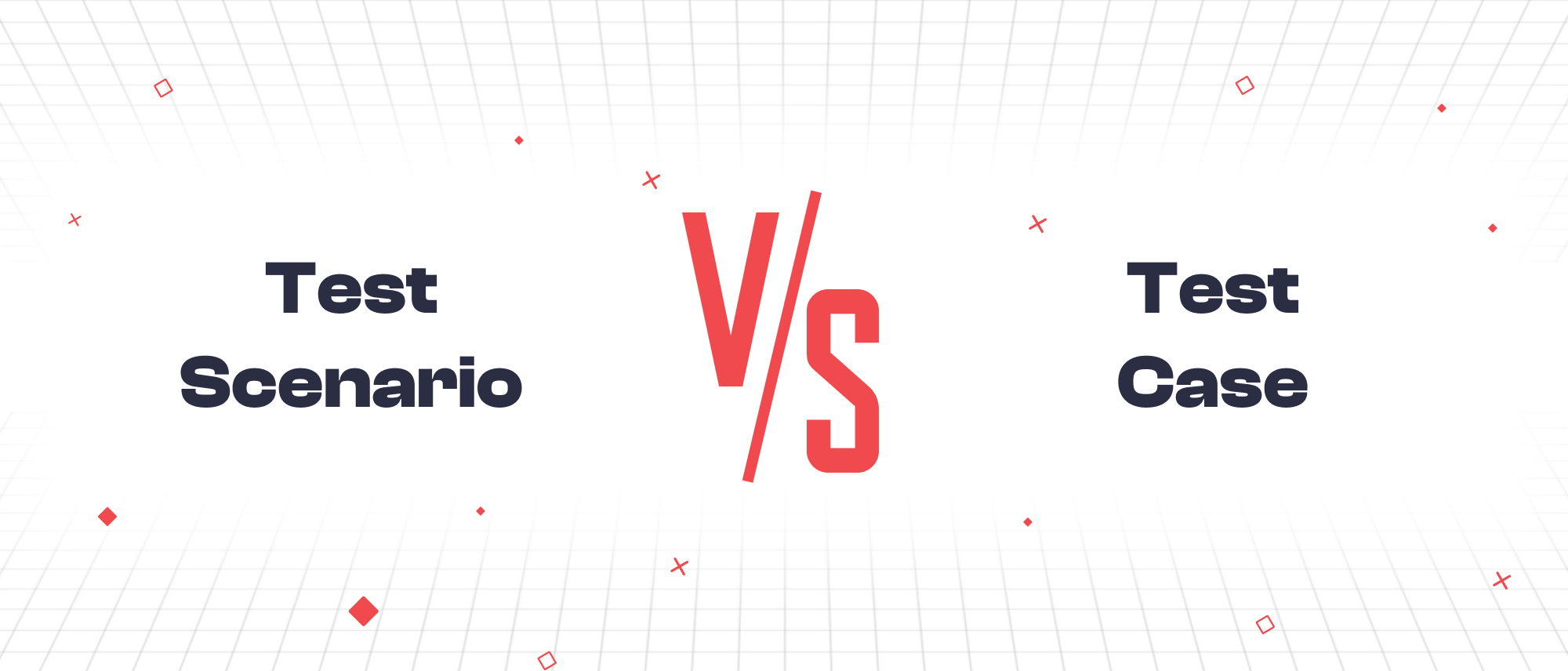Test Scenario vs Test Case (Key Differences)

This difference between test scenarios and test cases is an essential part for QA testers in the prevailing paramount. The purpose of this blog is to compile detailed information regarding test scenarios vs test cases, specifically focusing on what they are, why they are used, how they work and some key differences between the two. We hope, in the end, you will gain a better idea of how to make use of both in your testing strategies.
Understanding Test Scenarios
What is a Test Scenario?
A test scenario is generally a one-liner statement of what needs to be tested. It is the part of the application that needs to be tested. By creating test scenarios, testers can grasp the larger view of what needs to be tested and avoid overlooking any section of the application. They usually are user-oriented dealing with what and how the users will experience the system.
Characteristics of Test Scenarios
- High-Level Overview: Test scenarios provide a broad view of functionalities or features that need to be tested. They are not exhaustive but focus on the main goals of testing.
- User-Centric Approach: Such scenarios usually mimic real-world user behavior and help the testers evaluate the software from a user perspective.
- Parent to Multiple Test Cases: A test scenario can encompass a number of related test cases, allowing the testing of many things that are related to each other.
- Simplicity and Clarity: Test scenarios are generally easy to understand and communicate, making them effective for discussions with stakeholders.
Example of a Test Scenario
Consider an online banking application. A possible test scenario could be:
- Scenario: Users can successfully log in to their account.
This scenario succinctly encapsulates the idea of logging in, without detailing how it will be tested.
Importance of Test Scenarios
Test scenarios are very important in testing aspects. They:
- Guide Test Planning: These helps in planning a structured test plan by specifying what should be tested
- Identify Requirements: They make sure that all the critical features are covered and support in identifying requirement gaps.
- Facilitate Communication: This serves as a backbone for testing goals and brings everyone on the same page with testers, developers, and stakeholders using it as a common reference point.
Understanding Test Cases
What is a Test Case?
A test case is a set of conditions, inputs, actions and expected results developed for a particular test scenario. A test case walks through each of these steps in a way that allows for validation that the software does what it is supposed to.
Characteristics of Test Cases
- Detailed Documentation: Test cases include details like prerequisites, post-conditions, the specific steps needed to be performed to achieve some result as well as what should happen after a test case is complete.
- Specific Focus: These checkpoints are the range of those test cases which have been integrated inside a test case to verify a particular part of our scenario.
- Reproducibility: allows test cases to be executed again (in the same conditions as they did for a first run), which is key, as this is how we can perform regression testing and ensure software quality.
- Traceability: Traces defects to specific requirements, so that all functionalities are tested against their specifications.
Example of a Test Case
Continuing with the online banking application example, a test case for the login scenario might look like this:
- Test Case ID: TC001
- Title: Verify user login with valid credentials
- Precondition: The user has a registered account.
- Test Steps:
- Navigate to the login page.
- Enter a valid username and password.
- Click the 'Login' button.
- Expected Result: The user is redirected to the account dashboard.
- Postcondition: The user is logged in successfully.
Importance of Test Cases
For full-proof testing, you need test cases. They:
- Provide Clear Instructions: They serve as instructions for the tester that can structure different testers to test more consistently and informatively.
- Facilitate Defect Tracking: Detailed test cases help in detecting and tracking defects to areas of the specific functionalities.
- Support Regression Testing: Make sure that new changes do not affect the existing functionality.
Key Differences Between Test Scenarios and Test Cases
Having established definitions for both test scenarios and test cases, let’s delve into the key differences between them:
1. Definition
- Test Scenario: A high-level description of a situation or functionality to be tested, focusing on the overall objectives.
- Test Case: A detailed document outlining the steps to execute a specific test, concentrating on the precise actions and expected outcomes.
2. Purpose
- Test Scenario: Serves as a guide for what needs to be tested, providing an overview for the testing process.
- Test Case: Offers specific instructions for testing, ensuring that individual functionalities are validated.
3. Level of Detail
- Test Scenario: Broad and less detailed; focuses on the "what."
- Test Case: Highly detailed; focuses on the "how," specifying inputs, actions, and expected results.
4. Complexity
- Test Scenario: Less complex and easier to create; ideal for initial planning.
- Test Case: More complex; requires careful thought to cover all steps and outcomes.
5. Number of Components
- Test Scenario: This can encompass multiple test cases, representing a broader view of testing.
- Test Case: Typically focuses on a single aspect or requirement, making it specific and detailed.
6. User Interaction
- Test Scenario: Emphasizes the user’s perspective and interaction with the system, ensuring user experience is considered.
- Test Case: Concentrates on the technical validation of specific functionalities, often at a more granular level.
7. Stakeholder Communication
- Test Scenario: Easier to communicate to stakeholders, providing a quick understanding of what is being tested.
- Test Case: More technical and may require a deeper understanding of the application from stakeholders.
8. Development Process
- Test Scenario: Developed early in the testing process, often during the requirements analysis phase.
- Test Case: Created after the test scenarios, during the detailed test planning phase.
When to Use Test Scenarios and Test Cases
Where to Use Test Scenarios and Where to Use Test Cases Implementing good practices and decreasing the overall case of using test cases helps you give more effectiveness to your testing strategy.
When to Use Test Scenarios
- Initial Planning: This kind of outline is when you are starting a project and need to define what needs to be tested.
- High-Level Discussions: When you are talking to stakeholders not having technical details with them.
- Identifying Coverage: To ensure that all critical functionalities and user journeys are identified for testing.
When to Use Test Cases
- Detailed Testing: When you’re ready to execute tests and need specific instructions.
- Regression Testing: To ensure existing functionalities continue to work as expected after changes.
- Compliance and Documentation: This could be required when you need to write a more detailed documentation (e.g., for compliance, auditing )
Best Practices for Creating Test Scenarios and Test Cases
Best Practices for Test Scenarios
- Keep it Simple: Write scenarios that are easy to understand and communicate. Avoid complex language that could confuse stakeholders.
- Focus on User Journeys: Consider real-world use cases and test how users will interact with the application. This ensures that the most relevant functionalities are covered.
- Prioritize Scenarios: Identify the most critical functionalities to ensure important aspects are tested first. This helps manage testing efforts effectively.
Best Practices for Test Cases
- Use a Clear Format: Create a consistent format for writing test cases to enhance readability. This can include using templates that outline all necessary components.
- Be Specific: Include detailed steps, inputs, and expected results to minimize ambiguity. This ensures testers have a clear understanding of what to do.
- Review and Update Regularly: Regularly review test cases for relevance and accuracy, especially after application updates. This helps maintain the effectiveness of your testing strategy.
The Role of Automation in Testing
As we differentiate between test scenarios vs test cases, let us also quickly look into the role of automation in testing. Yes, manual testing should always be there — especially exploring user experiences, etc., but automation can greatly improve our efficiency and the coverage of our effort.
Benefits of Automation
- Speed and Efficiency: Faster execution of automated tests compared to manual tests which leads to more frequent testing cycles.
- Consistency: Automation minimizes the chances of a human making a mistake, meaning that tests will be performed in virtually the same way each and every time.
- Reusability: The automated test scripts are reusable over numerous projects and versions which saves time on writing repetitive new test cases.
Integrating Automation with Test Scenarios and Test Cases
When integrating automation into your testing strategy, consider the following:
- Identify Candidates for Automation: Not all test scenarios and cases are suitable for automation. Focus on repetitive tasks, regression tests, and scenarios with clear, stable requirements.
- Design Test Cases for Automation: Ensure that your test cases are written in a way that facilitates automation. This might include breaking down complex tests into simpler, modular components.
- Maintain Documentation: Keep your test scenarios and test cases well-documented to assist in automating the testing process. Clear documentation helps in understanding the intent behind tests.
The Importance of Collaboration
When it comes to software testing, always involve as many of your team in the process as possible. It is important to make sure the problem for which you want to write Test Cases is also clear between Testers, Developers and other stakeholders why a particular feature needs testing, what that feature should do and what actually requires Testing.
Encouraging Collaboration
- Regular Meetings: Schedule meetings to go over items for test scripts and cases. It promotes the free sharing of opinions and feedback among team members.
- Use Collaborative Tools: With the help of tools like JIRA, Confluence, or TestRail, keep test scenarios/test cases and be able to manage them further collaboratively. That way, everyone can know the most recent developments.
- Involve Stakeholders Early: From the beginning, involve your stakeholders in testing. Their inputs can shape test scenarios and prevent critical functionalities from being missed.
Conclusion
To sum up, with software testing as a background it is impossible to ignore or underestimate the difference between test scenarios vs test cases. Scenarios give a high-level overview of what to test, and test cases provide the detailed steps needed to validate the functionalities present. When used correctly, you can improve your testing strategy with sanitisers and guides to achieve better test coverage on your software products.
Remember these differences as you progress in your manual testing career so that your understanding of how to communicate with your stakeholders and your approach to testing can both level up. Understanding the test scenarios vs test cases will be very important for you to become an effective tester, as well as help your projects have a better chance of success.
Incorporate best practices, use automation and teamwork to effectively test the applications and be assured that your software is of top quality. This will finally help you have a better viewpoint through the challenges (hard parts of software testing) and deliver high-quality results on your projects.
Frequently Asked Questions
What's the main difference between test scenarios and test cases?
Test scenarios are high-level descriptions of what needs testing, while test cases detail specific steps, inputs, and expected results.
When should I use test scenarios instead of test cases?
Use test scenarios during initial planning, stakeholder discussions, and identifying test coverage requirements.
Can all test scenarios be automated?
No, not all scenarios are suitable for automation. Focus on automating repetitive tasks, regression tests, and scenarios with stable requirements.
